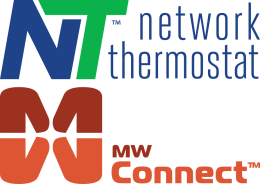
As the costs of energy increase and concerns about climate change grow, organizations are seeking to reduce their carbon footprint. One area that has received increasing attention is how to make schools more energy efficient. Not only does this help reduce the school's carbon footprint and present an opportunity to educate students on the importance of carbon neutrality, but it can also offer significant savings on energy bills – it’s a win/win.
In this blog, we will discuss the importance of energy efficiency in schools and provide actionable steps for making schools more energy efficient.
About Energy Efficiency Programs in K12 schools:
Many school districts across the United States have recognized the importance of reducing energy consumption and costs and created programs to address the issue. One example is the Energy Efficient Schools Initiative (EESI) in Tennessee. This program was launched in 2009 and has since dispersed more than $102 million in grants to schools across the state to implement energy-saving measures.
Through this program, schools receive technical assistance and guidance on energy efficiency strategies, energy audits, and financial assistance to implement energy-saving measures. EESI has proven to be a great success and has saved schools more than $43 million on energy costs.
Getting Started: Assessing Current Energy Efficiency in Schools
Before implementing any energy-saving measures, it's important to assess the current energy consumption of the school. This will help identify where energy is being wasted and where there are opportunities to implement energy-saving measures. Here are some steps to follow when assessing current energy consumption:
Analyzing Energy Bills:
Identify how much energy is used and the total expense. This will help determine the baseline energy consumption of the school so the impact of future improvements can be measured.
Identifying Energy Consumption Hotspots:
Finding the areas that consume the most energy in the school is crucial in implementing energy-saving measures. These areas are usually lighting, HVAC systems, and other electrical equipment. Identifying these hotspots will help determine which areas require immediate attention.
Implementing Energy-Efficient Measures
After documenting your energy consumption baseline, it's time to implement energy-saving measures. Here are some of the most effective measures that schools can take to reduce their energy consumption:
Upgrading Lighting Systems:
Upgrading the lighting system to LED lights can significantly reduce energy consumption. LED lights use less energy and last longer than traditional fluorescent lights.
Installing Energy-Efficient HVAC Systems with Smart(er) Thermostats:
Heating, ventilation, and air conditioning (HVAC) systems are the largest energy consumers in a school. Upgrading to energy-efficient HVAC systems and using NetX Smart(er) Thermostats can significantly reduce energy consumption.
Taking Advantage of 4CP or other On-Demand Energy Discounts:
Many electric providers offer energy discounts when customers can help reduce the electrical load during high-demand usage. NetX Demand Response makes taking care of “On-Demand Energy Savings” with easy-to-use point-and-click setbacks.
Insulating the Building Envelope:
Insulating the building envelope, including walls, roof, and floors, can significantly reduce heating and cooling costs. Insulation can help keep the indoor temperature consistent, reducing the need for heating and cooling.
Using Renewable Energy Sources:
Installing solar panels or wind turbines can help schools generate their own electricity, reducing their reliance on the grid and reducing their carbon footprint.
Encouraging Sustainable Behavior:
Encouraging sustainable behavior among students, staff, and faculty can help reduce energy consumption. NetX makes schools more efficient with managed lockouts. Managed lockouts provide teachers with a limited control range but prevent large temperature changes. Other options include turning off lights and electronic equipment when not in use, using reusable water bottles, and reducing paper waste.
Monitoring and Maintaining Energy Efficiency
Becoming energy efficient is an ongoing process and requires regular monitoring and maintenance to ensure long-term success. Setting up an energy management system and tracking energy consumption and savings is crucial for maintaining and improving school energy efficiency.
Here are some steps to follow when monitoring and maintaining energy efficiency:
Setting up an Energy Management System:
This system can help schools track their energy consumption, identify areas where energy is wasted, and inform energy-saving measures.
Use HVAC Alerts to Track Poor Running Equipment:
NetX Alerts on indoor temperature supply temperature and inefficient equipment runs can be used to monitor the health of the HVAC system.
Regular Maintenance and Upkeep:
Keeping the school's equipment and infrastructure in good operating condition can help ensure that energy-saving measures are working effectively.
Tracking Energy Consumption and Savings:
Careful tracking will help schools understand the impact of their energy-saving measures and identify areas for improvement.
Conclusion
Energy efficiency in schools is a smart financial decision and a critical step in reducing our carbon footprint and protecting the environment for future generations. At Network Thermostat, we are committed to helping schools and universities become more energy-efficient. Our line of products, including our Smart(er) Thermostats and occupancy sensors, can help schools save energy and money while improving comfort and control.



